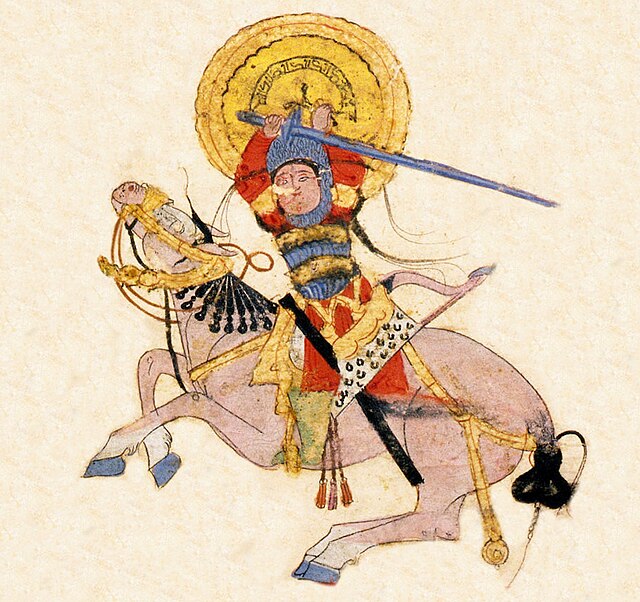Ghiyath al-Din Kaykhusraw ibn Kayqubād or Kaykhusraw II was the sultan of the Seljuqs of Rûm from 1237 until his death in 1246. He ruled at the time of the Babai uprising and the Mongol invasion of Anatolia. He led the Seljuq army with its Christian allies at the Battle of Köse Dağ in 1243. He was the last of the Seljuq sultans to wield any significant power and died as a vassal of the Mongols.
Dirham coin of Kaykhusraw II, Sivas, AH 638/AD 1240-1. The sun is thought to represent his wife Gurju Khatun and the lion the sultan.
The Sultanate of Rûm was a culturally Turco-Persian Sunni Muslim state, established over conquered Byzantine territories and peoples (Rûm) of Anatolia by the Seljuk Turks following their entry into Anatolia after the Battle of Manzikert (1071). The name Rûm was a synonym for the medieval Eastern Roman Empire and its peoples, as it remains in modern Turkish. The name is derived from the Aramaic (rhōmī) and Parthian (frwm) names for ancient Rome, via the Greek Ῥωμαῖοι (Romaioi).
Horseman with Anatolian Seljuk equipement, in Varka and Golshah, mid-13th century miniature (detail), Konya, Sultanate of Rum.
Gold coinage of Suleiman II of Rum, Konya, 597 H (1200-1201 CE)
Kızıl Kule (Red Tower), built between 1221 and 1226 by Kayqubad I in Alanya
Inlaid metal candle holder, probably Konya, 1250-1300.





